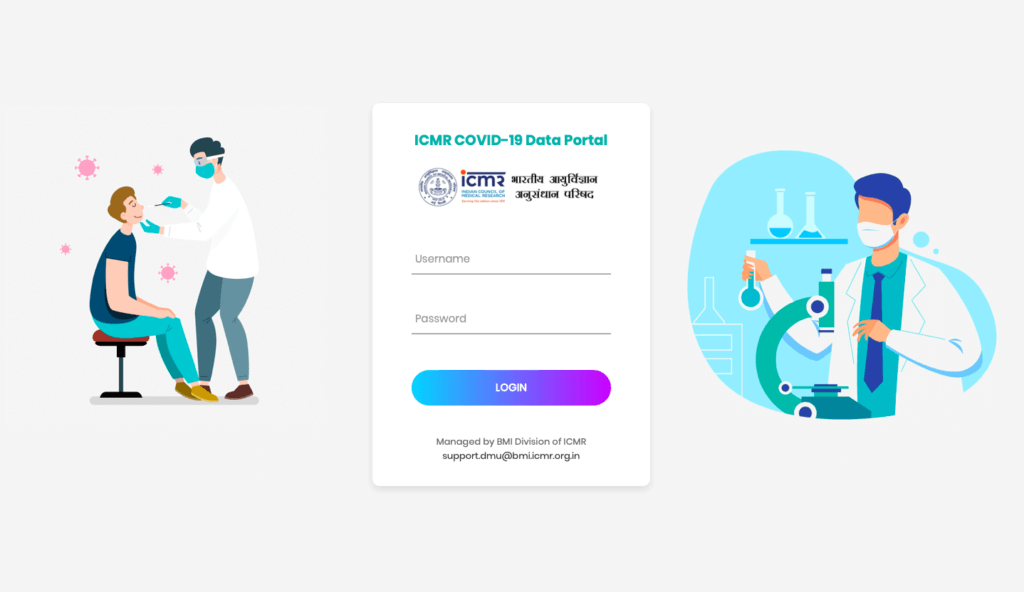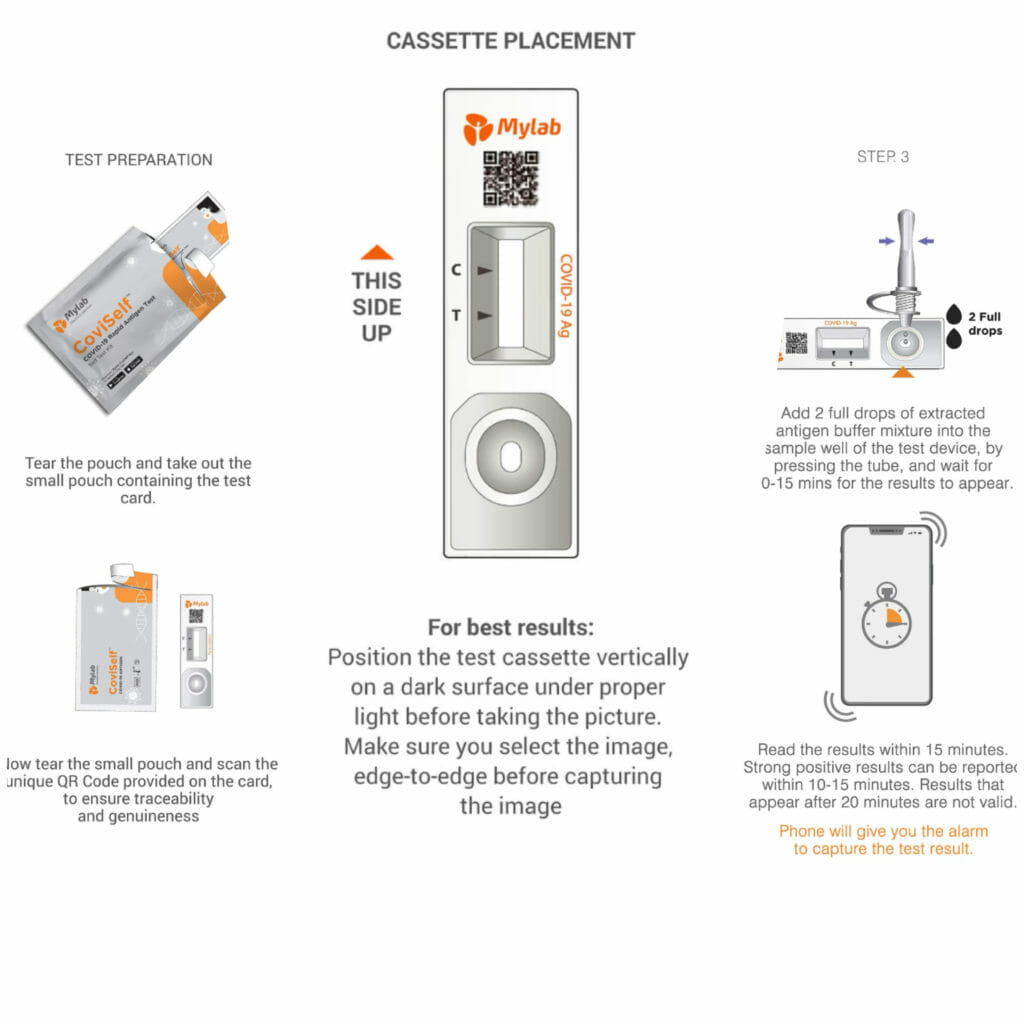Since the onset of the third wave, a surge in home testing for COVID-19 in Mumbai has brought new challenges for the Brihanmumbai Municipal Corporation (BMC). Mylab Discovery Solutions, the manufacturer of ‘CoviSelf’, a self-testing kit, which sold about 25,000 kits in Mumbai in December, saw its sales jump to about five lakh on January 7th.
By January 11th, 96,000 people in the city had tested themselves using home testing kits. Of these, 3,000 had tested positive according to Mumbai’s mayor Kishori Pednekar. And with no rule or law in place at that time making it mandatory for those doing home testing to report positive cases, it became harder for the civic body to track positive patients as those self-testing weren’t reporting results.
Currently, the Indian Council of Medical Research (ICMR) has approved 13 at-home COVID test kits since the approval of CoviSelf by Mylab, PanBio COVID-19 Antigen Rapid Test Device by Abbott and CoviFind, and the COVID-19 Rapid Ag Self Test by Meril Diagnostics.
Why the move to home testing?
Varied reasons for home testing for COVID-19 came up in my online conversations with Mumbaikars. The most common being time and cost. The self-test kits, which uses the rapid antigen test, cost anywhere between Rs 250 to Rs 350 and deliver the results in 15-30 minutes.
Better access to home testing for COVID-19 has meant that more people prefer the option to RT-PCR testing. When states were ramping up testing in 2020, the rapid antigen test proved to be a game-changer in that it could do a quick initial screening of patients and was implemented across the country. The test however, had only a 65% efficacy with false positives being common. The RT-PCR test was still necessary as a final check.
“The whole idea behind home-testing for COVID-19 is to quickly detect and isolate infected patients,” according to Dr Suresh Chandra Singh, who has worked with the Indian Institute of Technology, Bombay (IIT-B), on COVID antigen kits as the chief scientist and quoted in the Indian Express. “But now, people are using these kits to go undetected from surveillance. Most asymptomatic patients are taking medicines from local doctors. Then they step out and end up infecting others”.
Fears associated with reporting positive results to the civic body could also explain the discrepancies in Mumbai’s daily COVID-19 numbers. Since the BMC issued new guidelines for sealing residential buildings in which 20% of flats are infected with the virus, many flat residents are resisting declaring they’re COVID-positive.
One citizen said their doctor advised home observation for a few days since simultaneous viral fevers could bring confusion, and suggested testing only if fever persisted for more than three days. Others, too, shared that the first reaction to symptoms was to self-isolate before testing. Some pointed out that the lack of RT-PCR testing slots and the time taken, at times days, for a result, forced them to opt for home testing.
Read more: How to prevent viral fevers other than COVID-19
What does home testing for COVID-19 entail?
A standard home-testing kit consists of a nasal swab, pre-filled extraction tube and a test card. Without touching the swab head, one has to insert the swab 2-3 centimetres inside both nostrils. The swab should be rolled five times inside each nostril. The swab should then be dipped in the tube, while the tube at the bottom is pinched, and then swirled 10 times. To check results, the swab should be broken at the breakpoint and the tube covered. The drops can then be placed on the test card by pressing. A photo of the card should be clicked upon completing the procedure. (instructions are mentioned in all testing kits)
As of January 14th, the BMC made it mandatory for all users to report results, positive or negative, from home testing. A QR code at the back of every kit directs users to the ICMR website where they are required to record their results. A positive result from home testing for COVID-19 is considered final, but in the case of a negative result, a subsequent RT-PCR test is required.

Applications like Coviself and Covifind were also created along with the testing kits. According to their guidelines, users had to download the apps before taking the nasal swab sample. However, not much usage of either app was determined, and currently, the ICMR website is the official portal.


What has the impact of the new guidelines for home testing been?
“More than 1,24,000 people have uploaded their data,” says Suresh Kakani, additional municipal commissioner and in-charge of public health in the BMC. He adds that the BMC is tracking the distribution of home testing kits across the city, from medical stores to vendors who distribute via deliveries of online purchases. When asked whether the new guidelines have indicated a forthcoming peak of COVID-19, he says that Mumbai is still witnessing a gradual decline in daily numbers. “However, vigilance is still high,” says Kakani.
Buyers, sellers and distributors of the kits are required to maintain a daily record of buyers and share this data with email IDs set up by the civic body: mcgm.hometests@gmail.com and whogmp.mhafda@gmail.com. Upon receiving details, the war room verifies whether the results of the tests have been uploaded on the ICMR website. If not, buyers are contacted. According to Kakani, around 10% of daily testing figures are from home testing kits.
When asked whether Mumbai has struggled with setting up testing slots, Kakani asserted that the BMC has set up 226 centres in the city for RT-PCR testing. He added that the free-of-cost, official testing facilities are a better alternative for the civic body to monitor the infection of the virus.